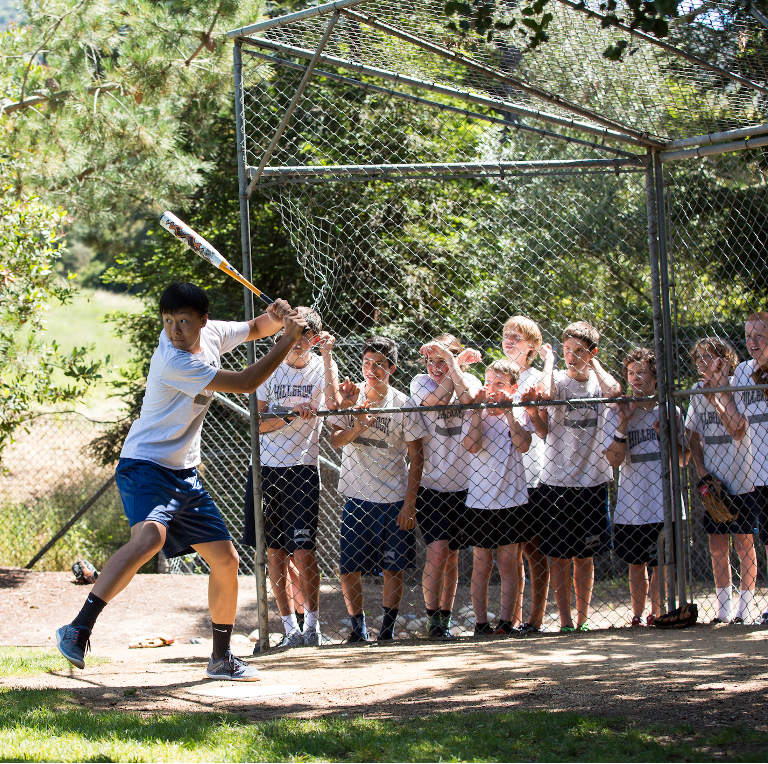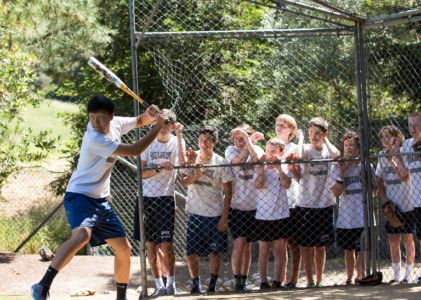Click here to listen to this week’s JAM: Play Ball!
With the arrival of June, I’m starting to pay attention to baseball again. The Giants recent run of good form – they’ve won 11 of their past 14 games – certainly helps, but regardless of how they do, I love following the game through the summer months.
I was thinking about baseball this morning when I had the opportunity to join 3rd and 4th graders and their families for a showcase of their growth as writers and researchers.
3rd graders shared informational writing books, multi-chapter explorations of favorite topics that included a table of contents, illustrations, photographs, glossaries, and a quiz to see how closely you were reading. Topics ranged from horses to dogs, from soccer to dancing to basketball, from Rubik’s cubes to fruit.
4th graders created informational posters focused on a person who faced some type of adversity and made a difference for a group of people. There was a broad range of people, including Muhammad Ali, Jackie Robinson, Marie Curie, Harriet Tubman, the Dalai Lama, and former President Barack Obama. Students wore pins they had designed of their person, and recounted highlights from their lives. People interested in learning more could discover all types of additional information on the tri fold poster boards.
So how does this connect with baseball? Yesterday’s 3rd and 4th grade event is a wonderful example of providing children an opportunity to play the game, an analogy popularized by Harvard Graduate School of Education professor David Perkins in his book, “Education at Bat: Seven Principles for Educators.” In his book, Perkins notes that schools are very good at asking students to practice things in isolation – learn your multiplication tables, practice your vocabulary and grammar, write an essay for your teacher, without ever asking children to put the parts together and play the game. We would never ask children learning to play baseball to only take batting practice, run the bases, and throw with a teammate, never giving them a chance to put the parts together and play the game. So why should we do that with school?
Yesterday, children had a chance to showcase their development as researchers, writers, and public speakers, sharing with an authentic audience their learning. The depth of academic work and effort that went into these presentations was impressive, and perhaps not obvious to some observers, just like the amount of practice that goes into becoming a great baseball player is not always obvious to the fans. Fourth graders, for example, had read and learned about a broad range of people, practiced different note taking systems, taken time to carefully select a person they wanted to highlight, wrote a speech in the voice of the person, produced “fact box” paragraphs about historical events happening during the time period of the person’s life, and then assembled it all on the tri fold and presented to their classmates, their parents, and then a more abbreviated version to the general audience. They even used Canva and partnered with 5th graders to design and create an original button, practicing their making and design skills in the Hub.
They had a chance to play the game, in other words, putting together a broad range of skills – research, note taking, analysis, design and making, presentation – and producing something bigger than the sum of its parts.
Based on my interactions with the children this morning, the practice and hard work of these past few months paid off. While they aren’t necessarily ready for the big leagues yet – they are only 8, 9 and 10 years old after all! – they definitely proved that they are at the top of their games in the 3/4 league. Play ball!

